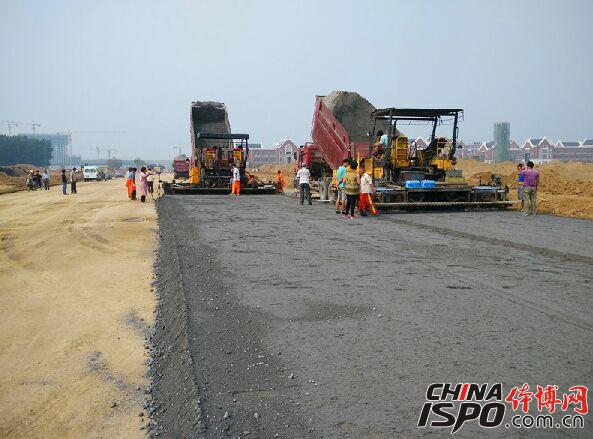How is the paving and compaction of limestone base layer performed?
After mixing limestone soil, it needs to be properly paved and compacted. There are two essential tasks during the paving process. First, the moisture content must be controlled within the optimal range. One common method to check this is the oven-drying method, which measures the water content. Another practical approach is the "hand test": take a handful of lime soil, form it into a ball, and if no water mark appears on your hand, and when dropped from 50 cm, it breaks into small pieces, or from 100 cm, it becomes loose upon landing, then the moisture content is considered suitable.
The second task involves controlling the virtual thickness of the layer. If not managed well, it can lead to difficulties in trimming after compaction, resulting in uneven heights. Typically, the virtual thickness should be 1.6 to 1.8 times the actual designed thickness, allowing for some manual leveling before rolling. The table below shows the recommended paving thicknesses for different lime soil mix ratios.
Once the lime soil has been paved, it's important to double-check the design elevation and slope. After laying, the following steps are typically performed:
**Step 1: Initial Compaction (Voltage Regulation)**
This step is the final check before full compaction. It helps identify internal issues such as improper thickness or uneven elevation. Light steel wheel rollers (6–8 tons) or crawler tractors are used for this. The rolling starts from the lowest point and moves upward at a slow speed. After two passes, stop and inspect for cracks, peeling, dryness, or looseness. Any issues found should be addressed immediately, and the surface should be leveled before proceeding.
**Step 2: Re-Compaction (Regrind Survival)**
After initial compaction and inspection, re-compaction is carried out using a 12-ton steel wheel roller. Start from the lowest point and roll at a speed of 60–70 meters per minute for 4–6 passes. Each pass should overlap by 1/2 to 1/3 of the rear wheel width.
**Step 3: Final Inspection and Trimming**
After compaction, a project inspection is conducted, including checking compaction, flatness, and other parameters. Any high areas can be trimmed with a leveling machine, while low spots should be filled with a good lime soil mix. After leveling, manually step on the area and roll it again, usually 4–6 times.
Finally, the lime soil base should be watered and cured for at least 7 days to ensure proper strength development.

Lime Soil Paving Thickness
Thickness |
15 (cm) |
20 (cm) |
||||
Paving Thickness |
Soil Thickness (cm) |
Lime Thickness (cm) |
Soil Thickness (cm) |
Lime Thickness (cm) |
||
10% Lime Soil |
15~16 |
22~24 |
5 |
20~21 |
30~32 |
7 |
12% Lime Soil |
15~16 |
22~24 |
6 |
20~21 |
30~32 |
8 |
14% Lime Soil |
15~16 |
21~23 |
7.8 |
20~21 |
28~31 |
10.5 |
Baking Sheet,Best Baking Sheets,Baking Trays,Best Cookie Sheets
Foshan Shunde Oubao Luo Intelligent Catering Equipment Co., Ltd. , https://www.aobl-ch.com